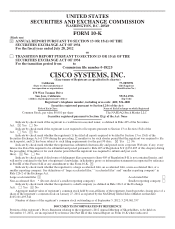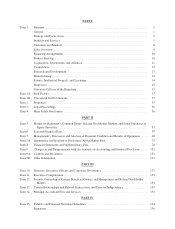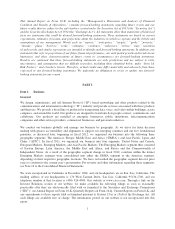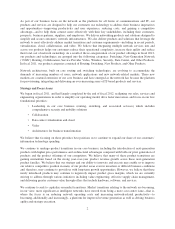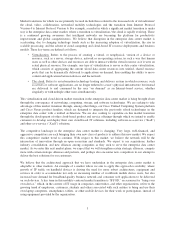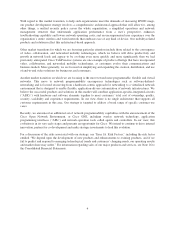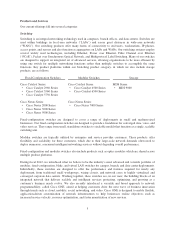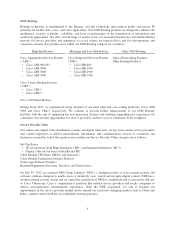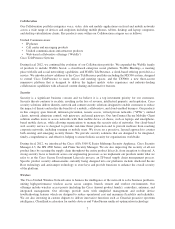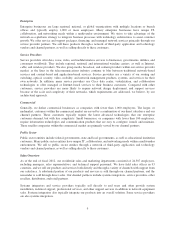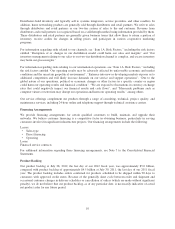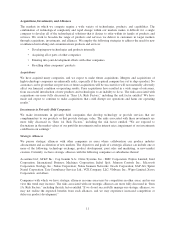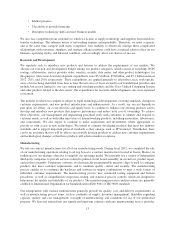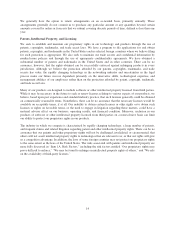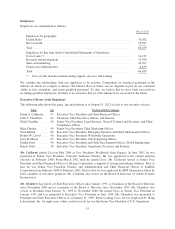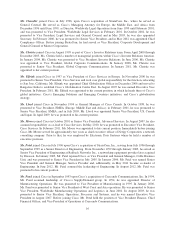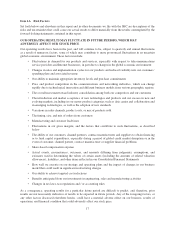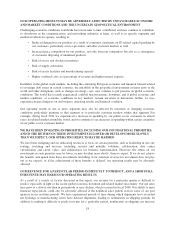Cisco 2012 Annual Report Download - page 16
Download and view the complete annual report
Please find page 16 of the 2012 Cisco annual report below. You can navigate through the pages in the report by either clicking on the pages listed below, or by using the keyword search tool below to find specific information within the annual report.Data Center
Our Data Center product category has been our fastest growing major product category for the past two fiscal
years. Cisco Unified Computing System (“UCS”) and Server Access Virtualization form the core of the Data
Center product category. Key product areas within our Data Center product category are as follows:
UCS
• Cisco UCS B-Series Blade Servers
• Cisco UCS C-Series Rack Servers
• Cisco UCS Fabric Interconnects
Server Access Virtualization
The UCS platform unites computing, network, storage access, and virtualization into a centrally managed and
automated system. During fiscal 2012 we made significant expansions to the computing and high-performance
virtual switching capability of UCS with the introduction of seven new server models and a new generation of
fabric interconnects and virtualized interface cards. These innovations are designed to further our strategy of
enabling customers to consolidate both physical and virtualized workloads with unique application requirements
onto a single unified, scalable, centrally managed and automated system. Our strategy has resulted in a portfolio
of standalone and converged infrastructure solutions designed to preserve customer choice, accelerate business
initiatives, reduce risk, lower the cost of IT, and represent a comprehensive solution when collectively deployed.
Other Products
Our Other Products category primarily consists of Linksys home networking products, certain emerging
technologies, and other networking products.
Service
In addition to our product offerings, we provide a broad range of service offerings, including technical support
services and advanced services.
Technical support services help ensure that our products operate efficiently, remain available, and benefit from
the most up-to-date system software that we have developed. These services help customers protect their network
investments and minimize downtime for systems running mission-critical applications. A key example of this is
our Cisco Smart Services offering, which leverages the intelligence from Cisco’s over fifty million devices and
customer connections to protect and optimize network investment for our customers and partners.
Advanced services are services that are part of a comprehensive program that is designed to provide responsive,
preventive, and consultative support of our technologies for specific networking needs. The advanced services
program supports networking devices, applications, solutions, and complete infrastructures. Our service and
support strategy seeks to capitalize on increased globalization, and we believe this strategy, along with our
architectural approach, has the potential to further differentiate us from competitors.
Customers and Markets
Many factors influence the IT, collaboration, and networking requirements of our customers. These include the
size of the organization, number and types of technology systems, geographic location, and the business
applications deployed throughout the customer’s network. Our customer base is not limited to any specific
industry, geography, or market segment. In each of the past three fiscal years, no single customer has accounted
for 10% or more of our net sales. Our customers primarily operate in the following markets: enterprise, service
provider, commercial, and public sector.
8



